Complimentary worldwide shipping on orders over $400 · No import tariffs for most countries
Complimentary worldwide shipping on orders over $400 · No import tariffs for most countries
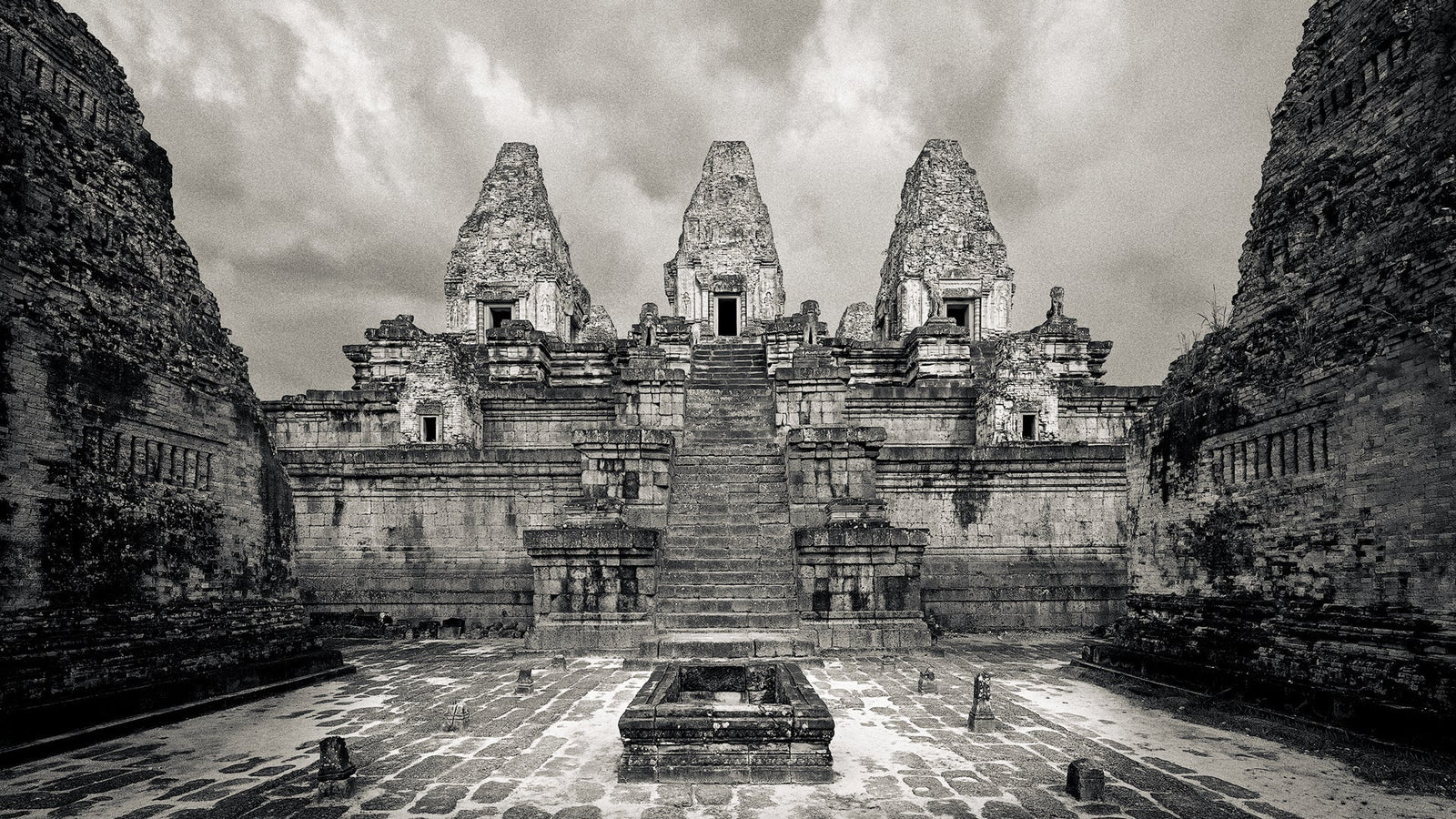
The Making of Where the Gods Dwell
2 min read
“Stormlight does not illuminate – it reveals.”
There are mornings when the camera ceases to be a tool and becomes a threshold.
I arrived at Pre Rup before the sky began to stir. The earth was still dark, warm with breath and decay, and the road dust whispered beneath my boots. In that hour, just before first light, Angkor holds its breath. You feel the weight of centuries – soft but insistent, like a hand on your chest. You do not walk into this space. You enter it like a dream that has remembered you.
Ahead, the temple emerged not from the earth but from memory. Pre Rup – monument of fire and farewell – its stones stacked in solemn symmetry, their weight still carrying the ash of cremation fires long extinguished. The structure is not simply old; it is consecrated. Not by religion, but by the slow reverence of time and storm.
And then, above me – movement.
The temple waits still,
storm presses against the sky –
no gods need to speak.
The sky was not brightening. It was gathering.
Storm clouds drew across the heavens like ink across ancient silk. They wrapped the temple in a chiaroscuro more dramatic than any hand could paint. It was not a sunrise; it was a reckoning of light. The architecture – worn, wounded, resolute – became a prism through which the emotion of the weather moved. Not a scene. Not a location. But an embodiment.
I set the camera low. I breathed, not to still my hand, but to enter into alignment with the moment. The photographic process here was less composition and more communion. This was not about technical perfection. This was about attunement. I waited for the sky to reveal itself not as background, but as character. When it did, I knew. The frame arranged itself. The shutter fell open. The moment held me, and I did not resist.
Ash in the cloudlight,
temples kneel beneath the storm –
stones remember fire.
Light is only the shadow
of silence made visible.
Back in the studio, I resisted the urge to “perfect” the image. To clean, to tame, to clarify – those acts felt profane in the face of what was captured. The photograph holds contradiction: monumentality and ruin, geometry and decay, heaviness and ascension. It holds what the mind cannot resolve – but the soul can recognise.
There’s a discipline in learning not to interfere when beauty appears on its own terms. The temple, the storm, the silent gravity of that morning – it required nothing of me but humility. And in that surrender, the image emerged.
This print – Where the Gods Dwell – is a meditation in architecture, atmosphere, and ancestral memory. It is both literal and symbolic. A visual invocation. A reverent stillness caught in the act of transformation.
Storm breaks the silence,
not with thunder, but with light –
stone accepts the gift.
Final Reflection
This photograph is a collaboration between time, weather, place, and presence. The process was not a conquest, but a submission – to mystery, to atmosphere, to the temple’s own terms. The final image, for me, is not just documentation – it is a relic. Not because of what it shows, but because of what it holds.
Also in Library
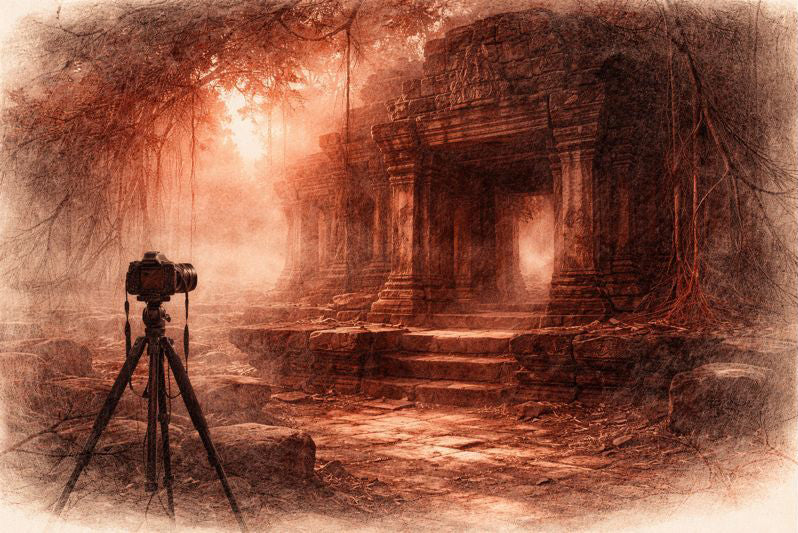
Before the Shutter Falls
3 min read
Before the shutter falls, fear sharpens and doubt measures the cost of waiting. In the quiet hours before dawn, the act of not-yet-beginning becomes a discipline of attention. This essay reflects on patience, restraint, and the quiet mercy that arrives when outcome loosens its hold.
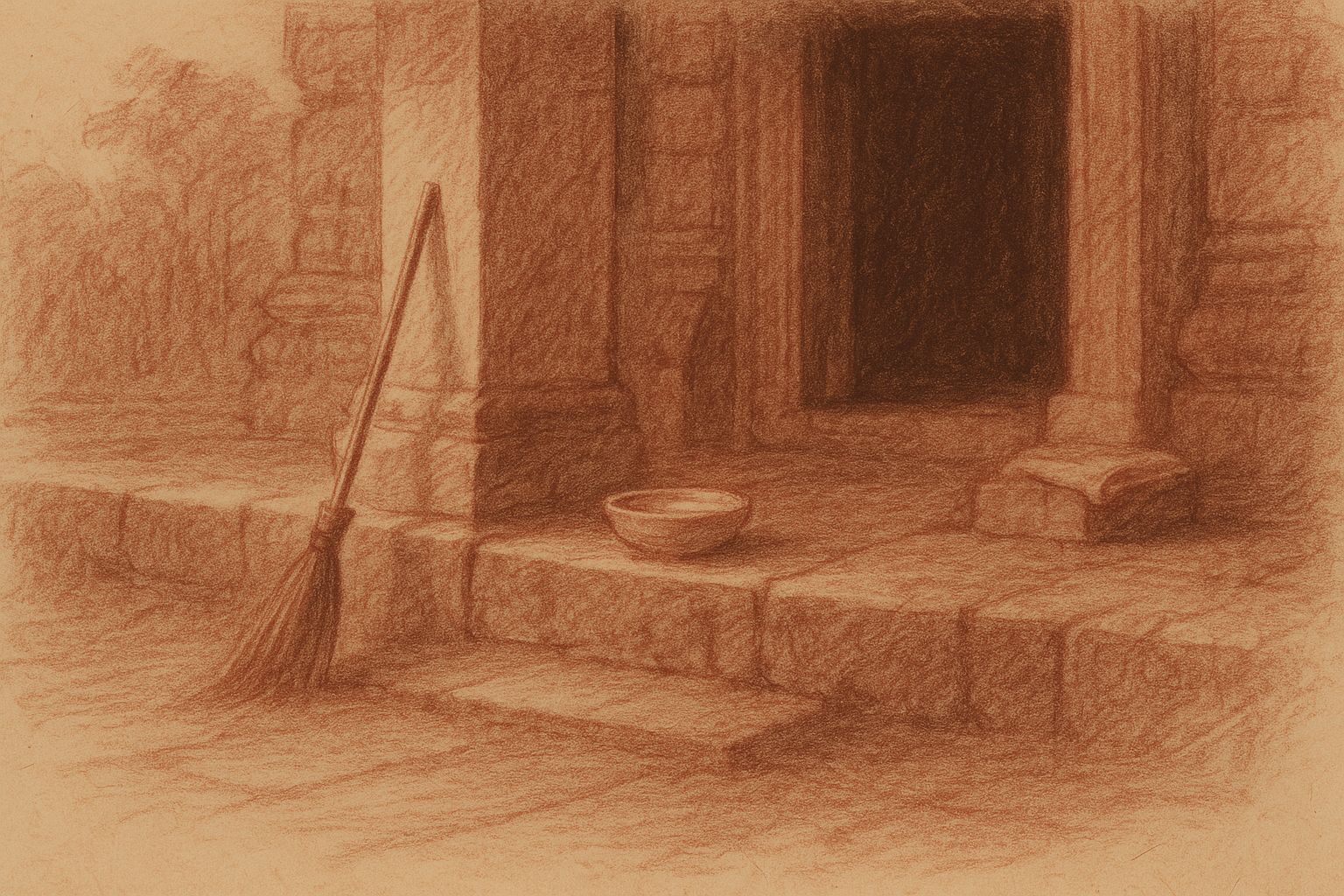
Those Who Keep the Way Open — On the Quiet Guardians of Angkor’s Thresholds
3 min read
Quiet gestures shape the way into Angkor — a swept stone, a refilled bowl, a hand steadying a guardian lion. This essay reflects on the unseen custodians whose daily care keeps the thresholds open, revealing how sacredness endures not through stone alone, but through those who tend its meaning.
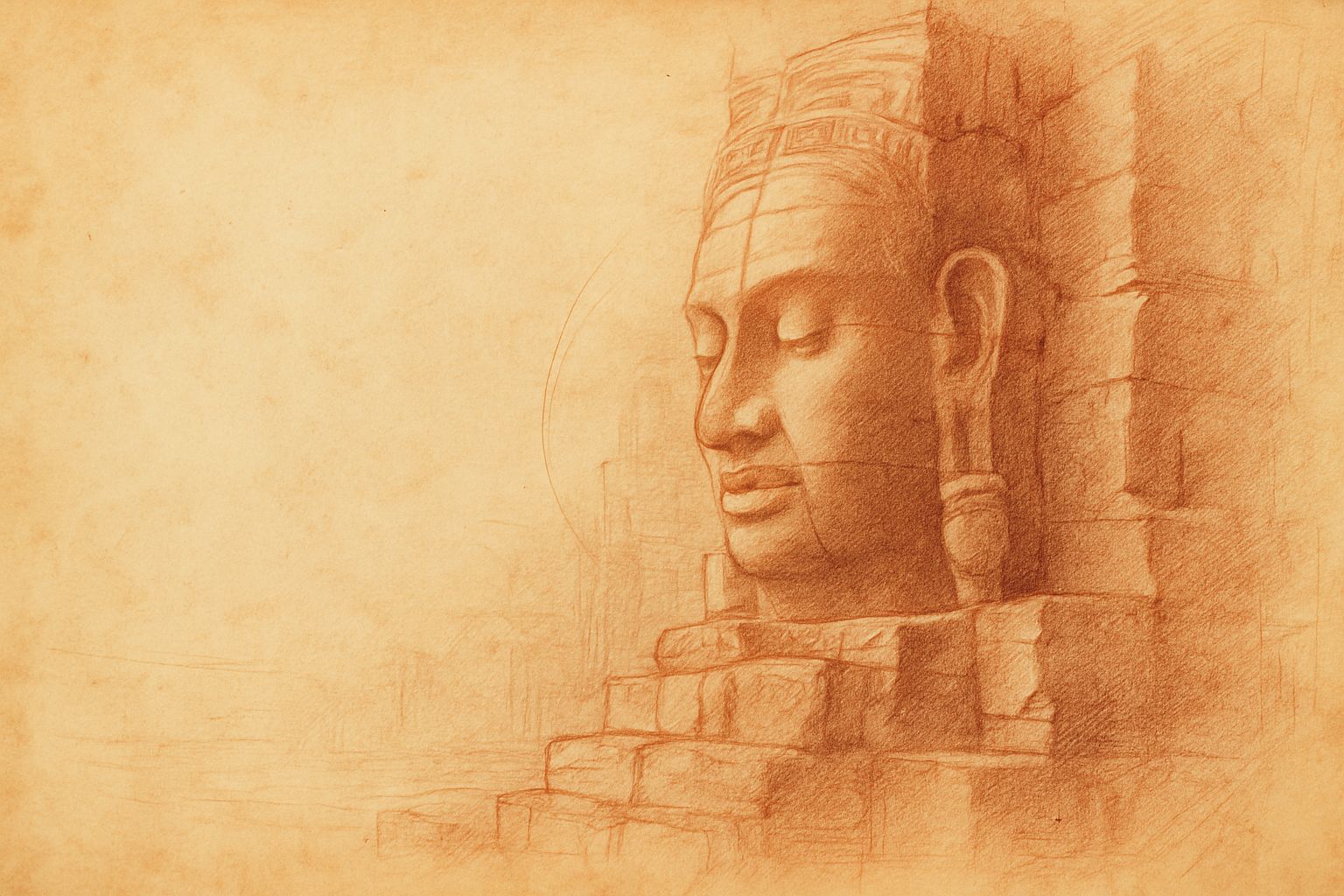
Multiplicity and Mercy — The Face Towers of Jayavarman VII
5 min read
A new vision of kingship rises at the Bayon: serene faces turned to every horizon, shaping a world where authority is expressed as care. Moving through the terraces, one enters a field of steady, compassionate presence — a landscape where stone, light, and time teach through quiet attention.
Pre Rup Temple, Angkor, Cambodia — 2021
Limited Edition Archival Pigment Print
Edition
Strictly limited to 25 prints + 2 Artist’s Proofs
Medium
Hand-toned black-and-white archival pigment print on Hahnemühle Bamboo — a museum-grade fine art paper chosen for its quiet tactility and reverent depth, echoing the spirit of the temples.
Signature & Numbering
Each print is individually signed and numbered by the artist on the border (recto)
Certificate of Authenticity
Accompanies every print
Image Size
8 x 8 inches (20.3 x 20.3 cm)
Storm gathers over Pre Rup with the gravity of an ancient hymn, each rumble folding cool rain-air into the courtyard’s porous stone. In that charged half-light five towers rise like weathered psalms, their open doorways breathing mysteries older than speech.
The temple itself seems to inhale, quincunx of spires mapping Mount Meru against a sky of restless pewter. Water varnishes laterite; every stair glistens like first light made tactile. Stillness moves here, and movement is a kind of stillness.
I waited motionless in the rain, the lens open and listening, my breath slowed to the tempo of thunder. Across the glass the stair became a dark river of ascent, and for a suspended moment I felt looked-upon rather than looking—a brief recognition between presence and stone.
Developed in the studio, the negative received chiaroscuro’s quiet guidance, depth coaxed from shadow, hush teased from light. Hand-toning followed, layer on layer, until the print held the low hum of rain and the unseen pulse of gods.
Each archival pigment print is made on museum-grade Hahnemühle Bamboo paper, strictly limited to 25 with 2 Artist’s Proofs, and signed and numbered on the border recto—an offering of rarity, craft, and devotion.
Should this storm-lit stair find a home with you, may it become a silent threshold where breath, shadow, and spirit meet.
To step further into its making, click here to enter the Artist’s Journal.
Previously titled ‘Pre Rup Temple, Study I, Angkor, Cambodia. 2021,’ this photograph has been renamed to better reflect its place in the series and its spiritual tone. The edition, provenance, and authenticity remain unchanged.
Join My Studio Journal
Receive occasional letters from my studio in Siem Reap—offering a glimpse into my creative process, early access to new fine art prints, field notes from the temples of Angkor, exhibition announcements, and reflections on beauty, impermanence, and the spirit of place.
No noise. No clutter. Just quiet inspiration, delivered gently.
Subscribe and stay connected to the unfolding story.
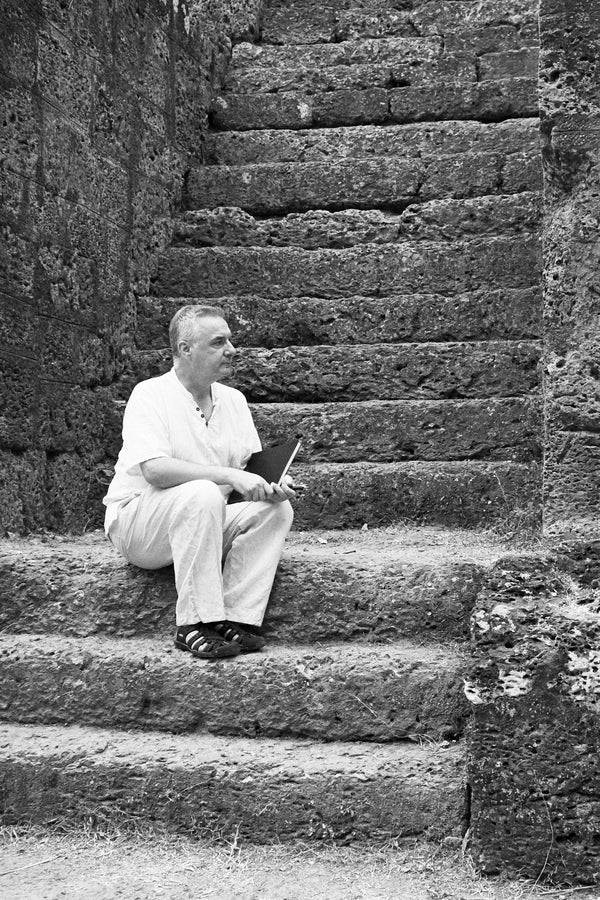
Join My Studio Journal
Receive occasional letters from my studio in Siem Reap—offering a glimpse into my creative process, early access to new fine art prints, field notes from the temples of Angkor, exhibition announcements, and reflections on beauty, impermanence, and the spirit of place.
No noise. No clutter. Just quiet inspiration, delivered gently.
Subscribe and stay connected to the unfolding story.

